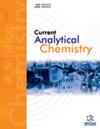利用机器学习对黄酮、黄酮醇和异黄酮进行基于拉曼光谱的结构分类分析
IF 1.7
4区 化学
Q3 CHEMISTRY, ANALYTICAL
引用次数: 0
摘要
背景:不同的 C-3 取代黄酮类化合物具有不同的生物活性,在食品药理学、毒理学和医学方面也有不同的应用。因此,对黄酮类化合物的 C-3 取代模式进行快速鉴定和分类有利于黄酮类相关食品和药物的加工。研究目的本研究旨在利用拉曼光谱对具有不同 C3 取代基的类黄酮进行分类,为鉴定植物中的类黄酮提供一种可行的方法。方法:选取 18 种黄酮类化合物样品:选取 18 种黄酮类化合物样品,将其溶解在不同的溶剂中。用便携式拉曼光谱采集相应的拉曼光谱。经过预处理、特征还原和机器学习后,根据 66 个拉曼光谱对三种类黄酮进行了准确分类。结果在 1002、1245、1590 和 1609 cm-1 处的黄酮信号被确定为特征峰。在 1298、1586 和 1605 cm-1 处的峰是黄酮醇的特征峰。异黄酮的指纹特征出现在 894、1227、1321 和 1620 cm-1 处。所有组合的分类准确率达到 85%,神经网络的准确率达到 93.3%。结论研究结果表明,机器学习可用于 C-3 取代类黄酮的检测和分类,特征缩减可帮助区分不同 C-3 取代类黄酮的拉曼光谱变化,从而促进其进一步应用。本文章由计算机程序翻译,如有差异,请以英文原文为准。
Raman Spectra-based Structural Classification Analysis of Flavones, Flavonols, and Isoflavones Using Machine Learning
Background: Different C-3 substituted flavonoids have different biological activities and applications in food pharmacology, toxicology, and medicine. Thus, the rapid identification and classification of substitution patterns at C-3 of flavonoids can benefit the processing of flavonoid-related food and medicine. Objective: This study aimed to classify flavonoids with different C3 substituents using Raman spectroscopy, providing a feasible approach for identifying flavonoids in plants. Methods: Eighteen flavonoid samples were selected and dissolved in different solvents. The corresponding Raman spectra were collected by a portable Raman spectrograph. After preprocessing, feature reduction and machine learning were used for the accurate classification of three flavonoids based on 66 Raman spectra. Results: The signals of flavone at 1002, 1245, 1590, and 1609 cm-1 were identified as the characteristic peaks. Peaks at 1298, 1586, and 1605 cm-1 were the special features observed of flavonol. The fingerprint features of isoflavone appeared at 894, 1227, 1321, and 1620 cm-1. All combinations achieved a good classification accuracy of 85%, and the accuracy of the neural network reached 93.3%. Conclusion: The results have demonstrated machine learning to be applicable for the detection and classification of C-3 substituted flavonoids and that feature reduction can aid in the discrimination of Raman spectra variations among diverse C-3 substituted flavonoids, thereby facilitating their further application.
求助全文
通过发布文献求助,成功后即可免费获取论文全文。
去求助
来源期刊

Current Analytical Chemistry
化学-分析化学
CiteScore
4.10
自引率
0.00%
发文量
90
审稿时长
9 months
期刊介绍:
Current Analytical Chemistry publishes full-length/mini reviews and original research articles on the most recent advances in analytical chemistry. All aspects of the field are represented, including analytical methodology, techniques, and instrumentation in both fundamental and applied research topics of interest to the broad readership of the journal. Current Analytical Chemistry strives to serve as an authoritative source of information in analytical chemistry and in related applications such as biochemical analysis, pharmaceutical research, quantitative biological imaging, novel sensors, and nanotechnology.
 求助内容:
求助内容: 应助结果提醒方式:
应助结果提醒方式:


